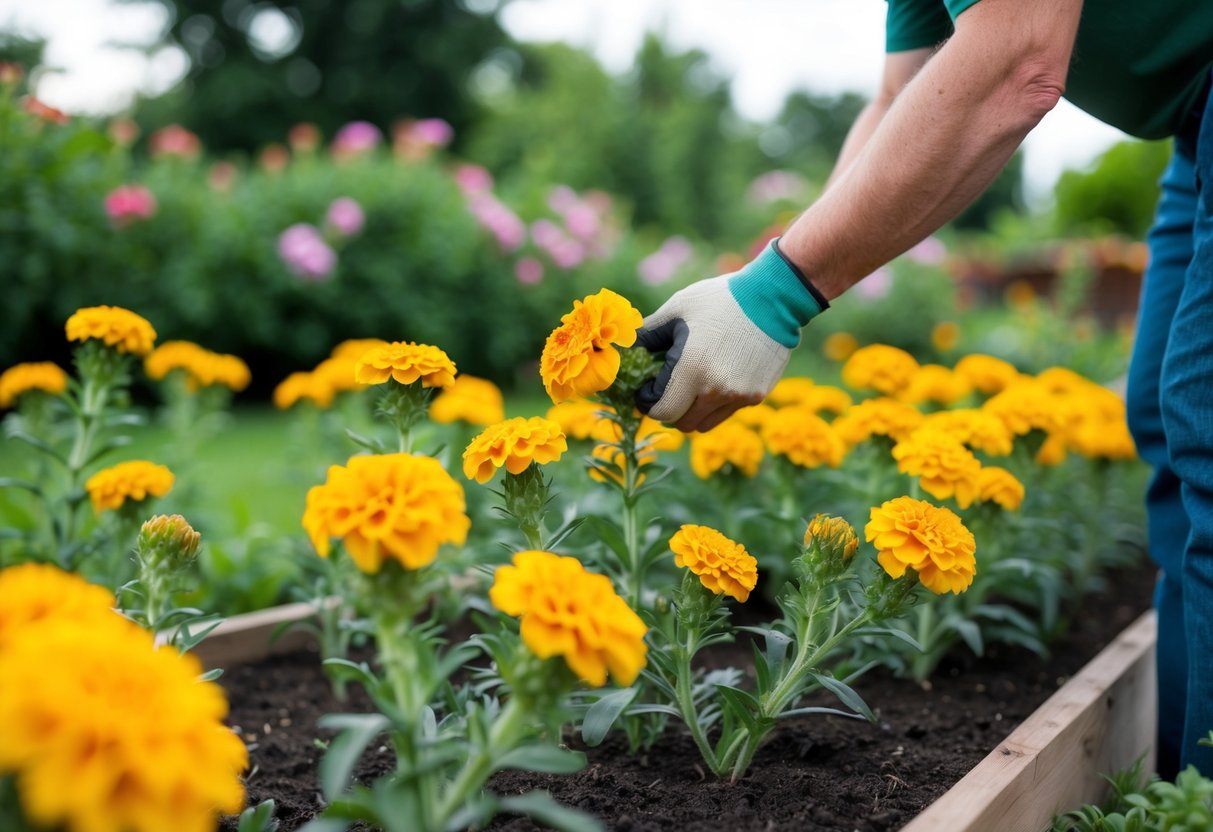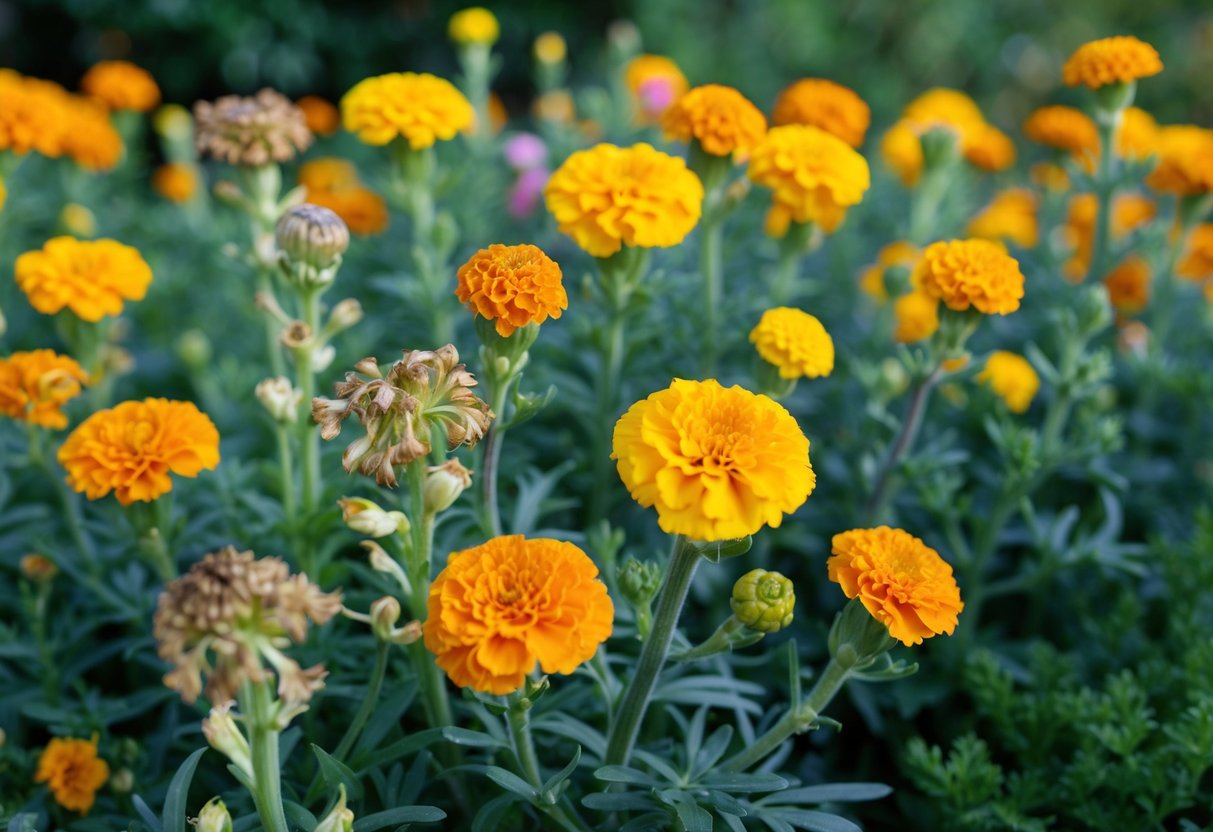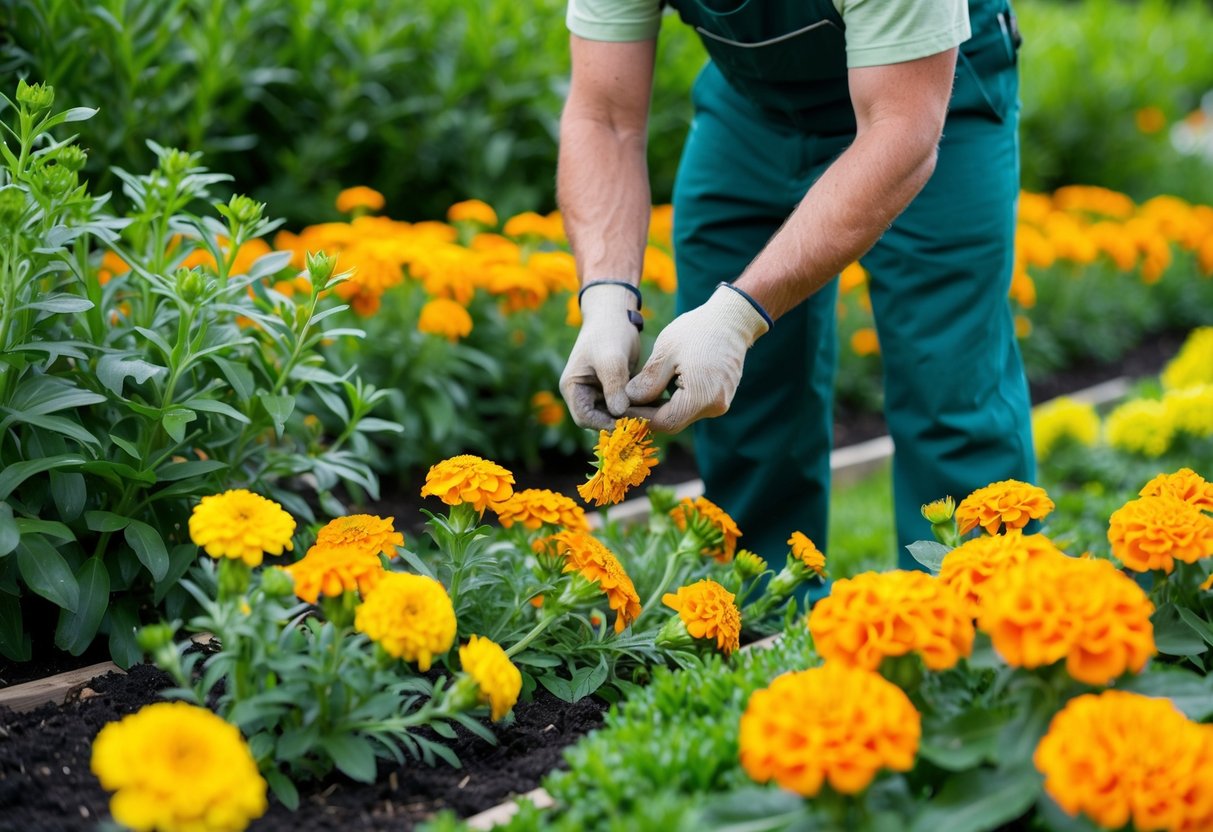Do All Marigolds Need Deadheading? Tips for a Happy Garden!
Gardening can be a soothing and rewarding hobby, with marigolds often being a favorite choice for many. These vibrant flowers are known for their bright colors and easy maintenance. Not all marigolds need deadheading, but doing so can help them produce more blooms and prevent the plant from wasting energy on dying flowers.

When you deadhead, you’re essentially pruning your plants, allowing them to grow stronger and bushier. This makes your garden look more lively and full of life. Keeping marigolds tidy ensures that your garden maintains a neat appearance throughout the blooming season.
While marigolds will still grow without deadheading, it can help you enjoy a garden that’s full of vibrant flowers. Discover why many gardeners recommend this practice and how it can make a difference in your gardening experience.
The Importance of Deadheading Marigolds

Deadheading marigolds is a simple task that brings about more vibrant flowers. By removing old blooms, you encourage new ones to flourish, extend the blooming period, and reduce unwanted seed production.
Promoting New Blooms
One of the main reasons to deadhead marigolds is to encourage fresh blooms. When you take off the old, withered flowers, the plant can send more energy to new buds. This means you get a continuous display of color in your garden.
It’s important to regularly deadhead marigolds, as this helps in maintaining a healthy and vibrant garden throughout the growing season.
Use your fingers or clean shears to gently pinch or snip off spent flowers, focusing on the area just behind the bloom.
Prolonging Blooming Season
Deadheading also extends the blooming season of your marigolds. Once a flower dies, the plant naturally slows down its production of new blooms. By removing these faded flowers, you prevent this slowdown.
Marigolds are known for their long blooming periods, lasting from spring to fall. Regular deadheading ensures that the plant remains active in producing new blooms for months.
You can enjoy bright and lively marigold flowers all season long with just a little effort.
Preventing Self-Seeding
Marigolds will self-seed if old flowers are left on the plant. This can lead to an uncontrolled spread in the garden. By removing the wilted blooms, you reduce the chance of seeds dropping to the soil and sprouting.
Some gardeners want consistent control of where flowers grow and how many plants are in their beds. Deadheading marigolds is a key practice to maintain this order and prevent overcrowding.
It keeps your garden organized and neat, making your marigolds look their best.
When and How to Deadhead Marigolds

Deadheading marigolds helps keep your garden vibrant by encouraging continuous blooms. By removing spent flowers regularly, you allow the plant to focus its energy on new growth. This process is straightforward and requires minimal tools. Following proper techniques will ensure healthier and more abundant marigold blooms throughout the growing season.
Identifying Spent Flowers
To start, it’s essential to recognize which marigold flowers need deadheading. Spent flowers are those that have lost their color and appear wilted or dried. These flowers will have petals that look shriveled compared to fresh ones. Identifying these faded blooms will help you know where to focus your efforts. Regularly inspecting your marigold plants will make this task easier and more efficient. Keep an eye on their overall appearance and take note of the color changes in the flower heads.
Proper Techniques for Deadheading
When it’s time to deadhead, gently grasp the stem behind the faded flower or seed head. Use your fingers to pinch and snap the stem. This method directs the plant’s energy toward new growth by removing the old bloom. You can also use pruners or pruning shears for a cleaner cut. It’s best to deadhead marigolds frequently to encourage new blooms. Try to do this a few times each week during the growing season. Keeping up with this routine will ensure your plants remain healthy and productive.
Tools for Deadheading
For deadheading marigolds, you only need a few simple tools. A pair of sharp pruners or pruning shears can be very helpful. Ensure your tools are clean to prevent the spread of plant diseases. Some gardeners prefer using just their fingers to pinch off faded flower heads, especially for smaller blooms. If you choose to use tools, wiping them with rubbing alcohol can keep them sterile. This step minimizes the risk of passing on infections to your plants. By using the right equipment, you’ll make the process smoother and more effective.
Caring for Marigold Plants Beyond Deadheading

Marigold plants thrive when they receive proper attention beyond just deadheading. Ensuring your marigolds get the right amount of water and nutrients, as well as managing pests, keeps them healthy and vibrant.
Watering and Fertilizing
Marigolds need consistent watering, but don’t let them get waterlogged. Water them deeply once a week, especially during dry spells. Check the soil: it should be moist but not soaked. Using liquid fertilizer every few weeks boosts growth.
A balanced blend with increased phosphorous and potassium helps marigolds produce more blooms. You might consider a water-soluble fertilizer to ensure nutrients reach the roots quickly. Apply in the morning to allow foliage to dry and reduce disease risk.
Managing Pests and Diseases
Pests like aphids can be a nuisance for marigolds. Regularly check for these little insects on leaves and stems. If you notice an infestation, you can spray your marigolds with a mixture of water and mild soap.
Encourage beneficial insects like ladybugs to naturally control pest populations. Fungal diseases can also be a problem, especially if the plants are too wet. Ensure good air circulation by spacing marigolds adequately. If you spot mold or rot, remove affected parts immediately to prevent spreading.
Benefits of Growing Marigolds in Your Garden

Marigolds offer many advantages when added to your garden. These flowers are not only beautiful but also serve practical purposes. They attract pollinators and provide benefits when used as companion plants, making your garden healthier and more productive.
Attracting Pollinators
Marigold flowers are wonderful for attracting bees and butterflies to your garden. These pollinators are essential for the growth and production of many plants, including vegetables. Marigolds bloom throughout the summer and into early fall, providing a steady source of food for pollinators during this period. This extended blooming season can help ensure that your garden remains lively and productive. By encouraging a diverse population of pollinating insects, marigolds enhance the ecological balance of your garden and promote the health of neighboring plants. Their vibrant colors and pleasant scent make marigolds a delightful addition that not only beautifies your space but also supports vital ecological functions.
Companion Planting Advantages
Planting marigolds as companion plants in your vegetable garden can offer practical benefits. Marigolds are known for their ability to deter certain pests, such as nematodes, that can cause harm to vegetables. This natural pest control method helps reduce the need for chemical interventions, promoting a safer, more sustainable gardening practice. The presence of marigolds can also help in creating a tidier garden environment by providing visual barriers between different types of plants, ensuring better organization. In addition, marigolds can improve soil quality and structure, benefiting your vegetables and making your garden a welcoming and productive place. By incorporating marigolds into your garden plan, you can enhance the overall health and aesthetics of your garden space.
Characteristics of Marigolds That Gardeners Love

Marigolds are favorites in many gardens due to their bright colors and easy-growing nature. They bring more blooms and vibrant displays, offering rewards with minimal effort. Their ability to thrive with little care is one of the many reasons gardeners enjoy having them around.
Maintenance and Aesthetic Appeal
Marigold plants are loved for their low maintenance, making them perfect for gardeners who want beautiful blooms without the hassle. You don’t need to worry about constant care, allowing you to enjoy gardening more. Once planted, marigolds grow quickly and begin blooming in the summer. Regularly removing flower pods, or deadheading, encourages more blooms and helps the plant look tidy and vibrant.
Even though deadheading is not a requirement, it can lead to a more appealing garden display. The colors range from bright yellows to deep oranges, adding a cheerful touch to any garden. Their ability to continually bloom throughout the summer enhances the gardening experience.
Drought Tolerance and Low Care Needs
Marigolds thrive in various conditions, proving themselves to be very drought tolerant. Once established, they can withstand dry spells, making them ideal for regions with less consistent rainfall. Even in hot summer months, they maintain their bright blooms without requiring frequent watering.
This resilience minimizes your workload and allows the plants to flourish with minimal intervention. When the soil is properly prepared, using a balanced fertilizer can help them start strong. With their adaptability, marigolds hold a special place in the hearts of gardeners who appreciate low care needs while still enjoying a garden full of flowers.







